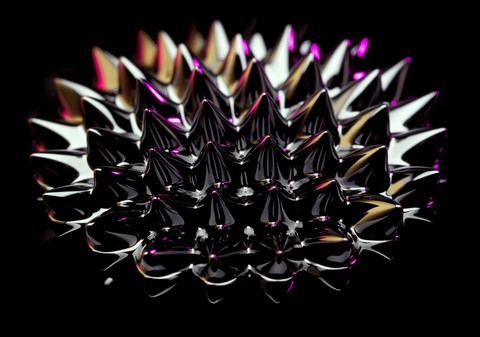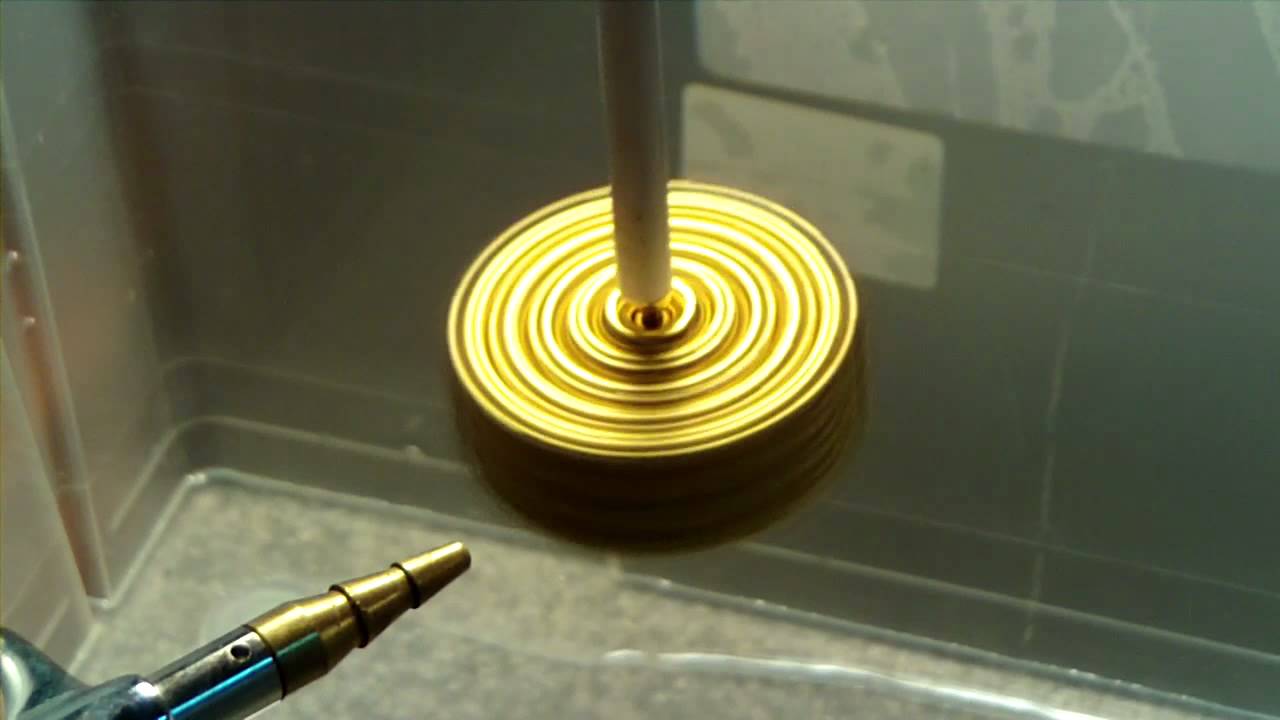Can you guess what happens?
This home experimenter displays the awesome power of neodymium magnets. They are some of the most powerful in the world and are # 60 on the periodic table. This element was first discovered in 1885 and even though it sounds mysterious it is as abundant as copper and nickel. Here is what is being displayed in this particular experiment:
4 Hexagon layers of Neodymium magnets reaching Terminal Velocity with the help of some compressed air. Hanging from a string of Neodymium magnets. The magnets reach such a high speed the magnetic force can no longer repel the centrifugal forces supplied by the compressed air. We have tried several different formations and it would seem mass does have an effect on how high of an RPM you can reach before they give out.
Here are some words from the home experimenter on the challenges and successes he encountered:
So i was not sure what exactly is going on here from a force stand point so i asked someone smarter this is what he told me…
“This is a classic angular rotation/centrifugal force (or is it centripetal?) Problem. As the angular speed increases, the force required to keep it together increases (obviously). The fun comes in the hexagonal structure of the overall mass and the “subcells” ill call them. The radial force is transferred through the lattice using these angular “bonds”
“The fun part is determining if it flies apart at the edge, or further in because the inner bonds have to resist the outward acceleration of all subcells further out. I bet the first delamination occurs at the point where the air contacts the mass. That exact point has to deal with the force of the air and the magnets. “
We hope you like the video and don’t try this without the supervision of a professional!
And a somewhat related area of discussion is ferrofluid. It is an odd magnetic substance that was invented by NASA within the last few decades. It is part magnet part plasma like material. The discussion of ferrofluid, super conductors and neodymium magnets come up together as they may all be part of new transportation methods…here and in space.
This pic is of a cool ferrofluid sculpture:


I’m interested in how the em field was altered during this event, and whas properties in the area of affect were created.
You can probably make a crop circle!!!!! lol
I saw what was happening. There was a wave effect from air pressure and the unsteady hand that caused a resonance wobble. It came apart because it hit the air nozzle. It smacked right into nozzle. I’m surprised no one mentions that.